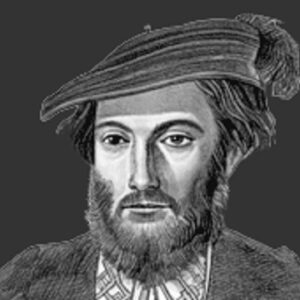The Americas were called after Amerigo Vespucci, an Italian explorer and navigator. He was the first to show the world that Brazil and the West Indies were not, as was widely assumed in the 15th century, part of Asia’s eastern boundaries. He claimed that the newly discovered areas formed a whole different landmass, previously unknown to Europeans, based on his lengthy sailing and excursions. The supercontinent was originally known as the “New World,” but was eventually renamed “America” in honor of this famous explorer. His paternal uncle, a Dominican priest called Giorgio Antonio Vespucci, gave him a humanistic education when he was born into a prestigious family in Florence, Italy. As he grew older, he pursued a profession as a merchant, working as a clerk at the Medici commercial house in Florence. He was once taken on a vacation to France by his work, and he became attracted with the ideals of travel and exploration. When he was in his 40s, he relocated to Spain and became an explorer. He first sailed under the Spanish flag, but was later invited to join voyages by the King of Portugal. He discovered that modern-day South America reached far further south than previously assumed during these travels.
Childhood and Adolescence
Ser Nastagio (Anastasio), a Florentine notary, and Lisabetta Mini had Amerigo Vespucci on March 9, 1454, in Florence, Italy. He was the eldest of two brothers.
Fra Giorgio Antonio Vespucci, a Dominican monk of the monastery of San Marco, was his paternal uncle and provided him with his first schooling.
Later the Years
His uncle, Guido Antonio Vespucci, was the ambassador of Florence to King Louis XI of France, and he dispatched Amerigo to Paris on a diplomatic mission. This journey instilled in the young man a desire to travel and explore.
At his parents’ suggestion, Vespucci began a mercantile career. He worked as a clerk at the Medici business house in Florence, which was managed by Lorenzo de’ Medici. He acquired the favor of Lorenzo di Pierfrancesco de’ Medici, who became the company’s head in 1492, as an employee.
In March 1492, Medici dispatched Vespucci to the Medici branch office in Cadiz, Spain, to investigate the activities after some of the Cadiz administrators were suspected of malfeasance.
He also had the chance to see Christopher Columbus after the latter returned from his expedition to America in the 1490s. Vespucci’s desire to travel around the world was piqued by this encounter.
When Vespucci learned that King Ferdinand and Queen Isabella of Spain were willing to support future expeditions by other explorers, he approached them and was granted his wish.
He joined an expedition in Spain’s service about 1499–1500. The expedition planned to sail around the southern end of the African mainland and into the Indian Ocean, with Alonso de Ojeda as fleet commander.
After reaching the coast of what is now Guyana, Vespucci and Ojeda split up. Then Vespucci sailed south and discovered the Amazon River’s mouth. Before returning to Spain via Hispaniola, he visited Trinidad and the Orinoco River.
He wanted to go on another long journey, but the Spanish crown would not let it. King Manuel I of Portugal, on the other hand, invited him to sail under Portuguese flags.
In May 1501, he embarked on his second trip, which began in Lisbon. The armada arrived in Cape Verde first, then proceeded to the Brazilian coast. Then they sailed south along the modern-day South American coast to the harbor of Rio de Janeiro. In July 1502, Vespucci’s ships arrived in Lisbon.
Vespucci addressed a letter to Medici after returning to Lisbon, in which he recounted the vast masses he had explored. He claimed that the territories were far larger than expected and that they were most likely not part of Asia. He went on to say that the newly discovered land masses must represent a “New World,” an unknown fourth continent after Europe, Asia, and Africa.
It is unknown whether Vespucci embarked on another voyage, but he is thought to have assisted in the preparation of additional missions.
He returned to Spain and became a citizen of the country. In 1508, Ferdinand II of Aragon recognized him by naming him as Spain’s pilot major, a position he kept for the rest of his life. Vespucci also conducted a navigation school.
Major Projects of Amerigo Vespucci
Amerigo Vespucci is well remembered for his discovery that the areas that would eventually become modern-day Brazil and the West Indies were not a part of Asia as previously thought, but rather a separate continent previously unknown to Europeans. The new continent was given the name “America,” which was derived from Vespucci’s first name, Americus, in Latin.
Personal History and Legacy
Apart from the fact that he was married to a woman named Maria Cerezo, little is known about his personal life.
On February 22, 1512, he died of malaria at his residence in Seville, Spain. His remains were interred in the Vespucci family cemetery in Florence, Italy.
Amerigo Vespucci Net Worth
Amerigo is one of the wealthiest and most well-known explorers. Amerigo Vespucci’s net worth is estimated to be $1.5 million, according to Wikipedia, Forbes, and Business Insider.


